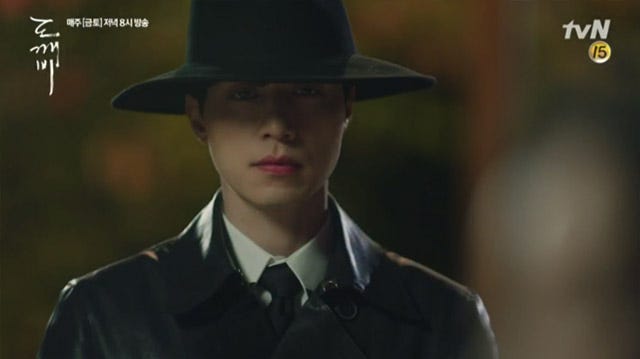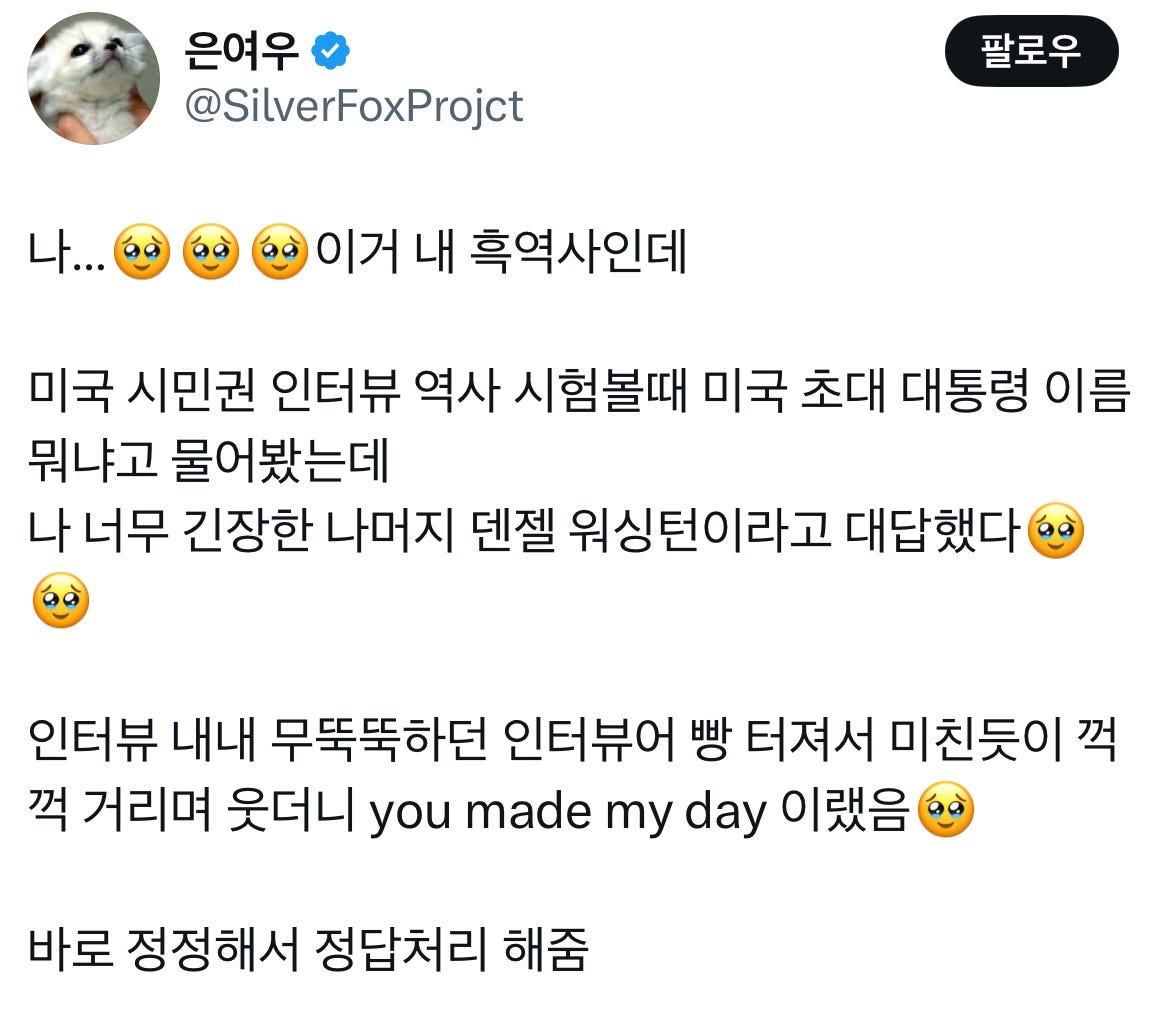안녕! It’s Ari, your chatty Korean friend and weekend reminder. 🎉 Today’s newsletter covers KPop Demon Hunters, guardians of death, and how to get closer with anyone effortlessly. Let’s dive in!
Into the K-Underworld 💀
Last weekend, I watched KPop Demon Hunters, 👆 the cute animated film that everyone’s talking about online. The film follows Huntrix, a popular K-pop girl group by day and demon slayers by night, as they protect the world from evil spirits. At one point, they face off against a rival boy band whose members turn out to be demons in disguise. I laughed a lot and even shed a few tears—it was funny, touching, and visually stunning. I also really loved the music. After watching the film, I kept replaying the songs on YouTube Music. They’re so addictive! (Your Idol is my favorite 😍)
The movie is full of Korean cultural elements—everything from bathhouses and hanyak (traditional herbal medicine) to gimbap and cup ramyeon. Among them, what caught my attention most was the name of the demonic boy band: Saja Boys.

When the boy band first debuted, they introduced their name alongside a lion logo—saja (사자) means “lion” in Korean—so the meaning seemed obvious at first. But later in the film, during a stadium concert where the Saja Boys begin stealing their fans’ souls, they reveal their true demonic forms, hovering in the air dressed in black gat (traditional Korean hats) and long black coats resembling hanbok. 👆 That’s when it clicked for me: “Saja” also refers to Jeoseung Saja (저승사자), the traditional Korean messengers of death who guide souls to the afterlife and are known to wear black gat and black hanbok.
Traditionally, Koreans believed in an afterlife. The world that souls entered after death was called Jeoseung (저승), a kind of underworld with its own king and bureaucratic system. The Jeoseung Sajas were agents from a specific division tasked with escorting the newly dead to this otherworld. Like civil servants, they had ranks and responsibilities. The three of them made a team and took turns visiting those fated to die—starting one month in advance.
The first Jeoseung Saja to visit was believed to be the most generous. If you bargained well or treated him kindly—usually by offering food—you might even be able to delay or escape death. In fact, according to a folktale, there was once a man who escaped death by offering a feast to the Jeoseung Saja twice. Believe it or not, that was how the story went. 😅
When the last of the three Jeoseung Sajas arrived, though, there was no escape. Even so, Koreans didn’t exactly fear these messengers themselves—they feared death, not the beings who brought the news. Jeoseung Sajas were simply doing their job, and people understood that. In fact, during funerals, it was customary for families to prepare Sajabap, a meal for the Jeoseung Sajas as a way to thank them for safely guiding their loved one’s soul to the afterlife. They were viewed as guardians of transition, rather than villains.

One reason Koreans weren’t terrified of Jeoseung Sajas is that they were believed to have once been ordinary people. They just happened to become public workers in the next world. You can see this humanized version of the afterlife in many Korean dramas and films. For example, in the 2016 drama Guardian: The Lonely and Great God, actor Lee Dong-wook plays a Jeoseung Saja 👆 who was once a living human and died over 900 years ago. In the 2017 movie Along with the Gods: The Two Worlds, a team of three Jeoseung Sajas guide a newly dead through a series of trials in the afterlife. The film, which was so popular it led to a sequel (Along with the Gods: The Last 49 Days), offers a richly detailed, cinematic rendering of the Korean underworld—complete with its own bureaucracy, moral courts, and soul guardians. If you’re curious about Korea’s mystical beings and the K-underworld, Guardian: The Lonely and Great God and Along with the Gods are must-watches.
As KPop Demon Hunters topped Netflix’s movie charts in many countries, I thought this story might serve as the perfect after-movie reading. If you haven’t watched the film yet, give it a try—especially if you’re a K-pop fan. It’s fun, vibrant, and just might leave you curious about the mysterious world waiting beneath. 👻
Mini Korean Lesson: Dark History

Everyone has their own embarrassing moments.
Some people have just a few, others have a mountain of them. Recently, a former Twitter (now X) user shared one of theirs — and it went viral in Korea. 👆
Here’s what they wrote:
“I… 🥹🥹🥹 This is my heuk-yeoksa.
During the U.S. citizenship interview, I was asked a history question:
‘Who was the first president of the United States?’
I was so nervous, I blurted out… Denzel Washington. 🥹🥹
The interviewer, who had been serious the whole time, suddenly burst out laughing, practically wheezing, and said:
‘You made my day.’ 🥹
They let me correct my answer right away and marked it as correct.”
In Korean, heuk-yeoksa (흑역사) literally means “dark history,” but it’s a slang term that refers to an embarrassing or cringey past you’d rather forget. It’s a casual expression widely used among young Koreans when talking about funny or humiliating memories — especially the kind that make you want to disappear the moment you remember them.
So, the next time you want to share one of your own heuk-yeoksa moments with a friend, just start with:
“이거 내 흑역사인데…” (This is my dark history…)
It might feel embarrassing — but chances are, you’ll all end up laughing and feel a little closer, too.
No food recipe today 🙏 Thanks for reading! 🥰 If you’d like to support my work, consider grabbing my book, I Like You, but Not Your iPhone! 📕 Or buying me a coffee. ☕️ I’ll be back in July. 안녕!




I've been meaning to watch that movie! Thanks as always for the culture and language lessons! Really like learning Korean slang haha that's a good one!